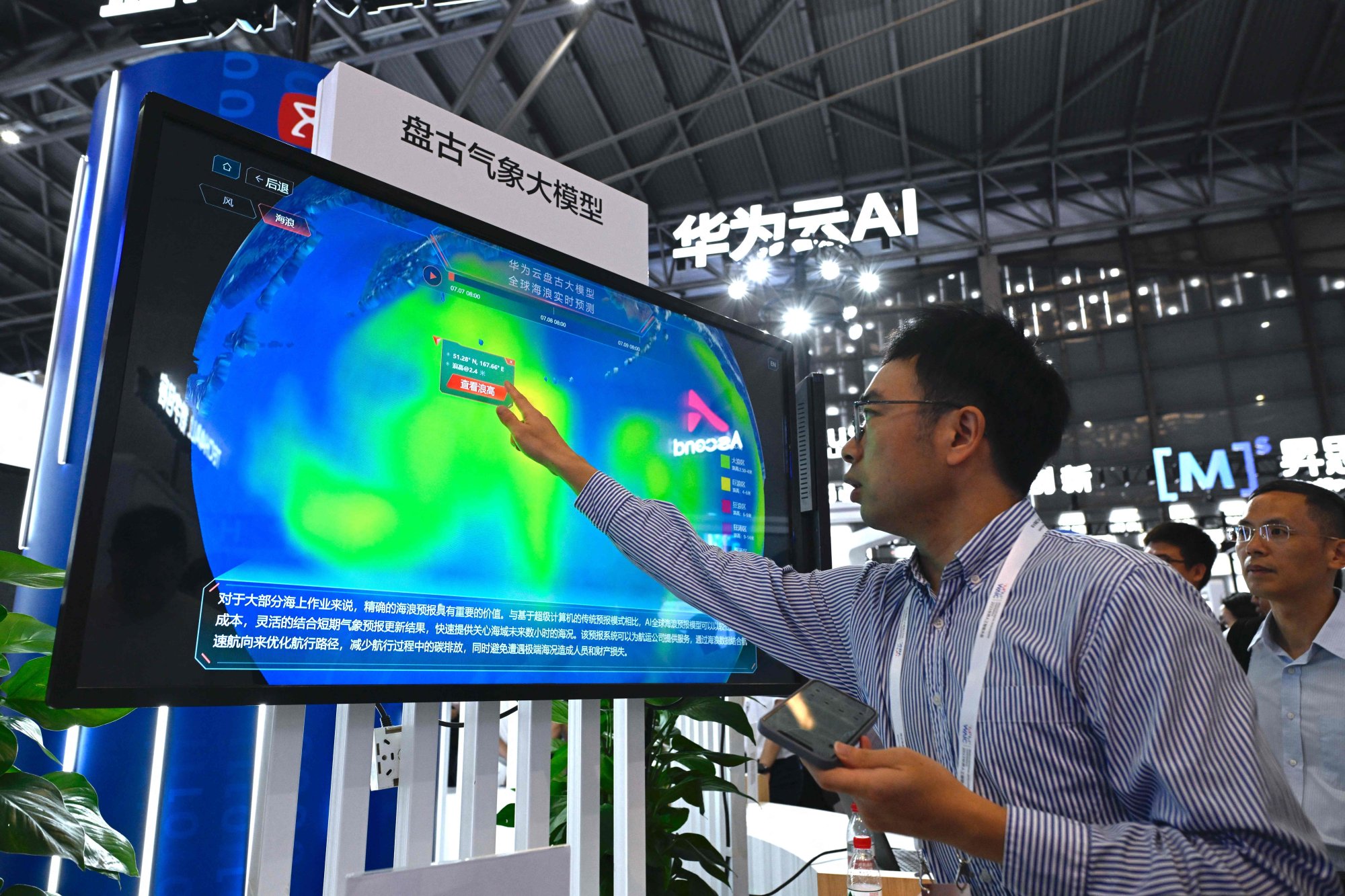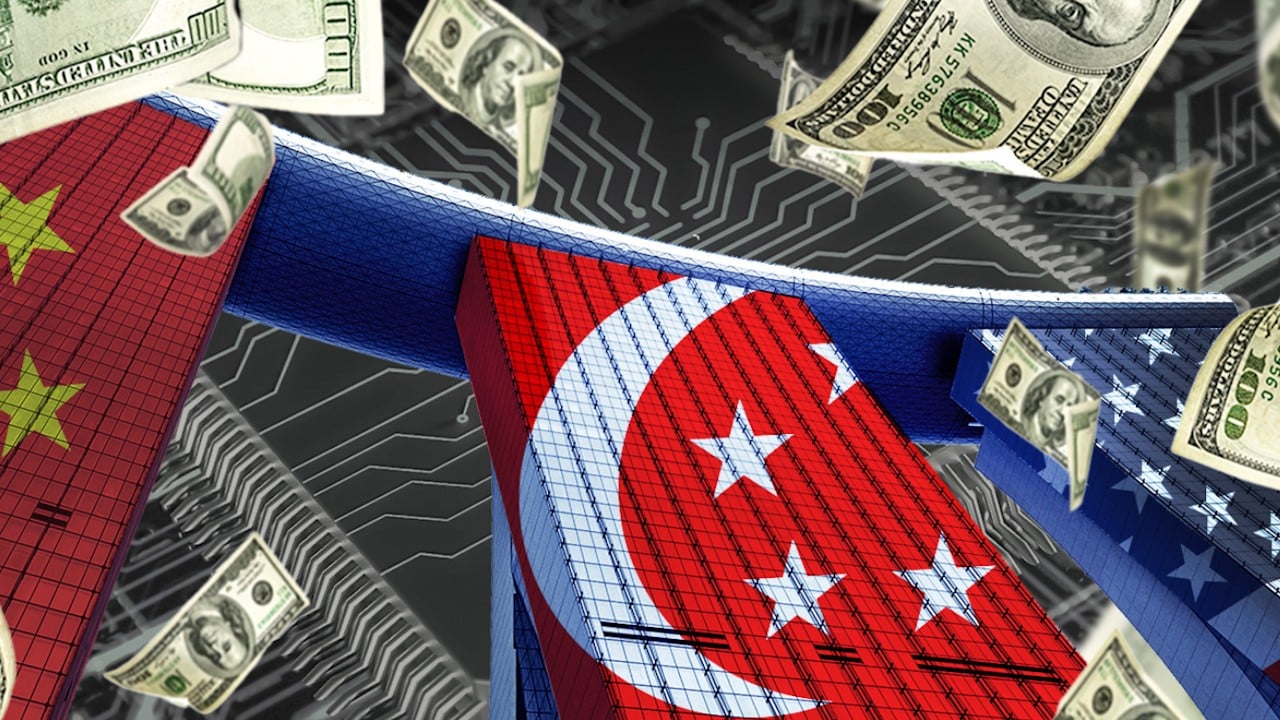
Google claims it is beating Huawei in global weather prediction with AI
- Results of a study have shown Google’s weather prediction model GraphCast performed better than Huawei’s Pangu-Weather in most tests
- Competition between China and the US in machine learning weather prediction has seen companies from both countries leapfrogging each other
In comparative tests, both models outdid the High Resolution Forecast (HRES) system, a long-standing industry standard by the European Centre for Medium-Range Weather Forecasts (ECMWF).
These impressive results were documented in a study by 18 researchers from Google DeepMind and Google Research, and published on Friday in the latest issue of peer-reviewed journal Science.
This field has seen significant contributions like NVIDIA’s FourCastNet, DeepMind’s GraphCast and Microsoft’s ClimaX. China’s recent notable contributions are Huawei’s Pangu-Weather and FengWu from the Shanghai Artificial Intelligence Laboratory.
DeepMind has a history of tackling complex problems. After beating human players in strategic games such as Go and StarCraft, the company turned its talents to the skies.
It released a model for short-term precipitation forecasting in September 2021. A paper published in Nature highlighted that its generative model was leading in accuracy in 89 per cent of cases when compared to other competitive methods.
But the complexities of midterm weather forecasting, which predicts weather trends four to 10 days ahead, posed more of a challenge.
These forecasts are crucial for sectors like agriculture, construction and tourism, but they require a vast amount of data.
To achieve this forecasting, weather agencies such as ECMWF rely on numerical weather prediction (NWP), which uses current and historical data from satellites and weather stations and calculates results based on complex physical rules.
Despite its reliability, NWP is known for being costly and computationally intensive.

Chinese tech company Huawei broke new ground in November 2022 with the introduction of the Pangu-Weather model. By employing 3D neural networks, the model surpassed traditional NWP methods in accuracy for the first time.
Then hot on Huawei’s heels, DeepMind refined its GraphCast model. Over time, and with continuous improvements, DeepMind has reclaimed the lead in accuracy.
In detailing its achievements, DeepMind noted the significant benchmark set by Huawei.
“GraphCast exceeded traditional HRES systems in 90 per cent of test cases on 1,380 targets and outperformed top competing Pangu-Weather model in 99.2 per cent of 252 targets it presented in July,” the paper said.
Each operates at a 0.25-degree latitude-longitude resolution, dividing the Earth’s surface into more than a million grids. While GraphCast updates its forecasts every six hours, Pangu-Weather provides hourly updates.
In terms of model complexity, GraphCast’s 36.7 million parameters make it a lean contender when compared to the billion-level parameters of Pangu-Weather.
Both models require minimal computational resources in actual use. GraphCast was trained on 32 of Google’s self-designed Cloud TPU v4 units over three weeks, but needs only one TPU to generate a 10-day forecast in under a minute. Pangu-Weather can deliver a 24-hour global weather forecast in just 1.4 seconds on a V100 graphics card – more than 10,000 times faster than traditional methods.
Despite all these achievements told in academic papers, neither GraphCast nor Pangu-Weather are ready to replace traditional forecasting methods just yet.
Huawei scientist Tian Qi cautioned that the goal of the Pangu-Weather model was not to replace but to provide an expert assistant to industries, businesses and individuals, making work more efficient.
DeepMind research engineer Remi Lam echoed this sentiment in the paper, emphasising that the institute’s approach should not be seen as a substitute for traditional methods, which have undergone decades of development and rigorous real-world testing.


